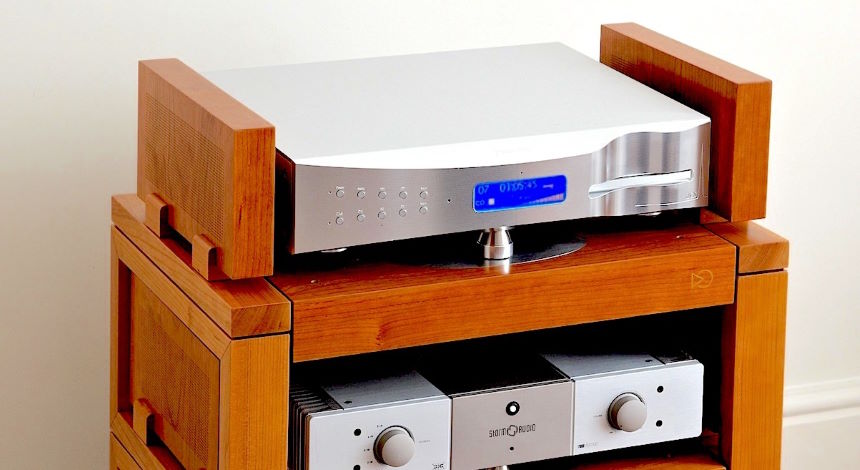
Sweet sound from digital sources – advice
Reproduction of the CD format, from players and streamed from internet suppliers, like Qobuz and Tidal, has come a long way and can rival vinyl for musical enjoyment – with the right equipment. It is crucial, and we mean crucial, to protect the music signal from contamination by vibration, mains pollution, high speed processing and RFI – but results can be awesome.
Read the side bar below.
RFI – the digital curse
One big potential problem with all digital reproduction is hard-edged sound, caused by interaction with vicious mains pollution and airborne Radio Frequency Interference (RFI). Whether you are in a city or the Outer Hebrides you are swathed in transmissions – from kHz to GHz. :
- mobile phones
- high speed switching in LED lights
- TV and radio broadcasts
- police radio
- airline traffic etc.
Another problem is modern chips which run very high-speed processes, such as upsampling, that generate RFI inherent with high-speed switching. Their algorithms are also prone to “glitches” which they overcome – by guessing what’s missing! Read more below.
Is there a solution? A resounding YES! Read about Quiescent solutions on this web site.
The result can be a quality of sound most audiophiles have never heard.
Why does RF matter?
The D to A converter (DAC) in the player (or a separate component) is processing very high speed music data right into the radio frequency spectrum and “sees” RF pollution that leaks in as part of the music signal. The rubbish gets mixed in with the music and the result is the glassy, hard-edged high frequency nastiness that’s wrongly dubbed “digital sound”. It’s not the fault of the digital process but of the pollution around us.
At the very least we strongly recommend some mains filtration, that will benefit the whole system. There are two solutions:
one is the Balanced Mains Distribution Blockdistribution block that incorporates filtration for every socket plus their trademark acoustic energy absorption – and the second, much more capable solution, is the top-spec Balanced Power Supply. Balanced power offers huge improvements in supply that make equipment sing. Musicians suddenly play exactly together and the performance flows, the difference between a first rehearsal and years of experience.
Beyond CD – computers and servers
Many audiophiles have become disillusioned with results from computers and streamers. The realism is not “there”, audible imperfections grate on the ear – endemic in the processing unless treated – and technical standards have yet to be established, which makes listeners chary about investing.
Normal computers are definitely not high audio quality devices, with very noisy power supplies and circuit components never designed for audio use. Spinning hard drives that offer large storage capacity are another source of damaging electrical noise. Solid state drive (SSD) prices drop as capacity is increasing to make them a better, much quieter alternative. Large spinning drives can still be used for “off-line” storage, sending music files to an SSD as a buffer.
The RFI problem
Just as with CD replay, radio frequency interference is a major bugbear with streaming music. Sources are obviously external radio transmissions but many audiophiles don’t realise that signal processing within the equipment is at least as damaging.
Modern chips run very high speed processes – programmed into their structure – to offer facilities such as upsampling. Two problems with this: high speed processing is high speed switching – ON/OFF at frequencies in the MHz – which sprays out RFI, and secondly the mathematical algorithms in their internal programming contain faults, or “glitches”, manufacturers’ literature explains this. To compensate, so that the “checksums” add up, the chips interpolate digits that are guesses! Our amazing ear/brain combination hears these faults and it spoils our enjoyment. The processing is built into the chips and cannot be turned off.
We have coined the term “busy chips” to describe these problematic components. Is there an answer? Yes, curiously to go back to early-generation chips with minimal processing. Our supplier Vertex built their superb Aletheia DAC (hifi+ review) around a very simple chip, also used by a small number of other companies, but then treated the circuitry to huge amounts of their RFI/EMI and energy absorption technology for spectacular performance.
Some technical help
There’s a helpful guide dCS_Guide_to_Computer_Audio that explains well some of the confusing terminology, eg kHz or kS/s?
Here’s a useful article, although written for Mac computers and covering setting up the computer, it also suggests sources for material: Hi-res recordings


